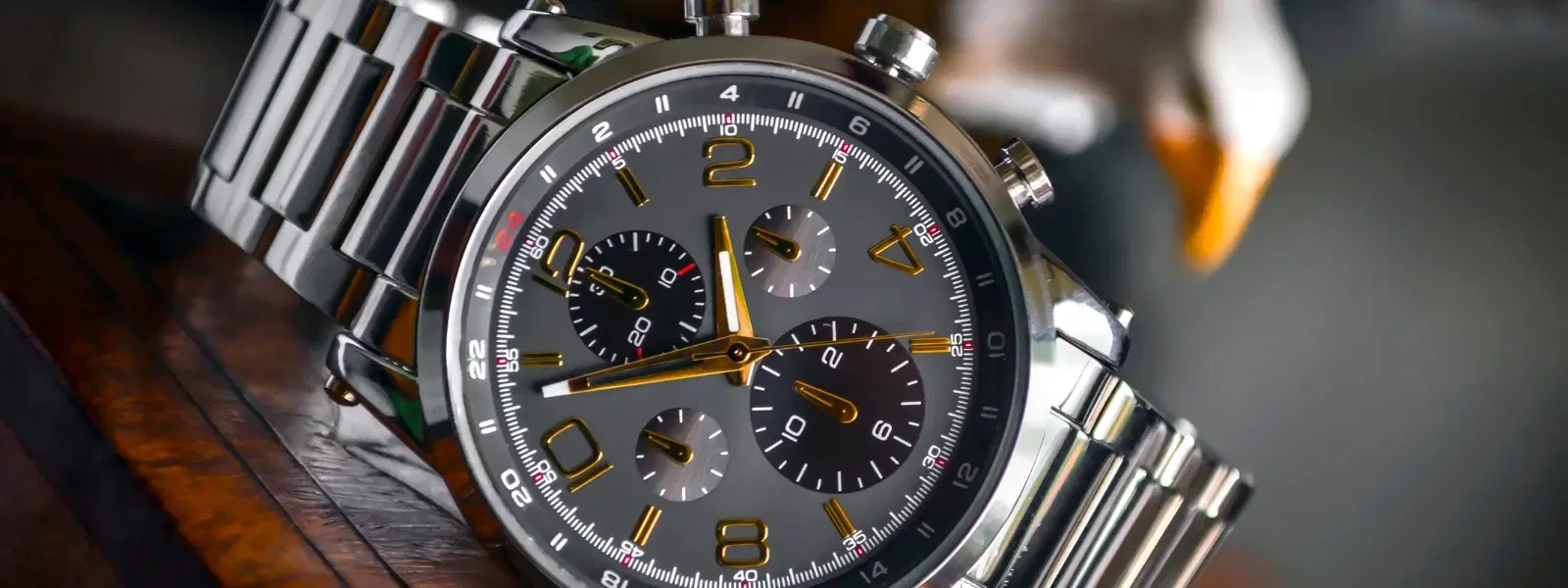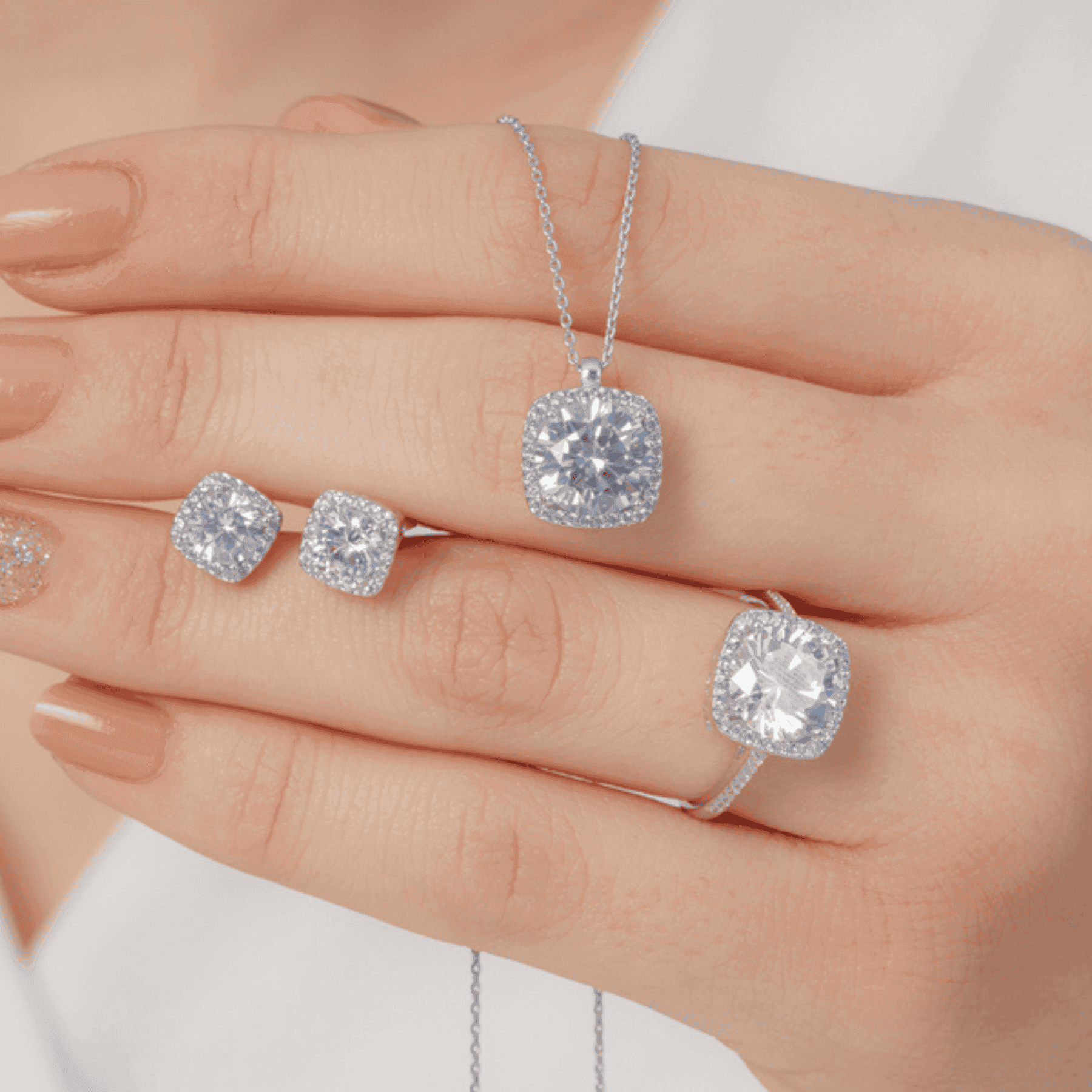
Watches & Jewellery
•04 min read

Swiss and German watches have long been symbols of meticulous craftsmanship and refined design. In this guide, we break down the essential factors that set these two watchmaking traditions apart. Whether you are a seasoned collector or a first-time buyer, this checklist will help you understand the nuances of design, movements, and heritage, ensuring you choose a timepiece that truly reflects your style and identity.
Swiss watches have established themselves as the benchmark in luxury and precision. Their journey dates back to the 16th century, when an environment of neutral innovation helped these timepieces gain global acclaim. Swiss watch craftsmanship is celebrated for its intricate detailing and innovative designs. Over the years, the evolution of Swiss watch movements has set a high standard in precision watchmaking. This legacy is enriched by a perfect blend of tradition and innovation that continues to define the market for premium wristwatches.
Swiss neutrality fostering innovation
The rise of iconic luxury watch brands
The Quartz Crisis reshaping traditional methods
German watchmaking is deeply rooted in engineering precision and utilitarian design. Originating from the town of Glashütte in the mid-19th century, this tradition emphasizes robust construction and clean aesthetics. German watch engineering and design rely on technical expertise, which has enabled these timepieces to rival even the best luxury timepieces from across the globe. Today, German watches continue to impress with their superior material innovation and performance-focused features, making them a worthy consideration for every connoisseur.
Emphasis on engineering and material innovation
Rich history influenced by resilience and revival post major challenges
Continued excellence in high-end timepieces
Swiss timepieces are synonymous with luxury and artistry. They feature sleek aesthetics, intricate details, and a charm that transcends time, making them suitable for both formal and casual occasions. With their premium materials and elegant designs, Swiss watches are a perfect blend of sophistication and heritage. These automatic watches comparison insights show that buyers appreciate the mix of tradition and modern innovation found in Swiss watch craftsmanship.
Sleek aesthetic appeal with significant attention to details
Use of refined, luxurious materials
Collections that cater to both classic and sporty styles
German watches are celebrated for their functional design and unassuming elegance. Embracing minimalist principles, these timepieces deliver performance without unnecessary adornment. The design philosophy is anchored on clean lines and practicality. This approach makes German watches ideal for everyday use, particularly where durability is paramount. With a focus on German watch design, these models are crafted to deliver a seamless balance between aesthetics and technical brilliance.

Clean, minimalist design inspired by Bauhaus principles
Prioritization of performance and durability
Innovative materials that lead to a robust construction
At the heart of many renowned timepieces lies the legendary Swiss movement. These automatic movements are celebrated for their smooth operation and reliability. With COSC-certified chronometers and intricate features like perpetual calendars and tourbillons, Swiss watch movements continue to be admired by collectors and enthusiasts alike. The commitment to precision watchmaking is evident in every calibrated tick, making Swiss watch craftsmanship a true symbol of excellence.
Highly refined automatic movements
Emphasis on accuracy and durability
Advanced features including chronometers and tourbillons
German watch movements showcase a unique blend of innovation and traditional engineering. These movements are often characterized by manual-winding calibers and distinct designs like the three-quarter plate from Glashütte. The focus is on creating dependable and precise mechanisms that reflect the true spirit of German watch engineering. Whether you are considering an automatic watches comparison or exploring manual options, the intricate construction of German movements stands out as a mark of quality.
Manual and automated mechanisms engineered for precision
Unique design features such as hand-engraved details
Robust construction that ensures long-term durability
Pro Tip: Don’t Overlook Movements
Did you know that Swiss and German watches differ significantly in their approach to movements? Swiss timepieces typically boast traditional automatic mechanisms renowned for accuracy, while German watchmakers focus on manual-winding calibers with unique escapement designs. Understanding these differences can guide you in choosing a watch that perfectly fits your practical needs and refined style.
Examine the history and reputation of the timepiece you are considering. Swiss brands have long been revered for their tradition and luxury, delivering premium wristwatches that tell a story. On the other hand, German brands pride themselves on their functional design and engineering prowess. Both offer distinct signatures in the world of watchmaking, so choose based on what resonates with your personality.
Look at the materials and the craftsmanship behind a watch. Swiss watches are noted for their exquisite detailing and luxurious components, making them a testament to precision watchmaking. German watches, by contrast, shine with their technical innovation and durability. Evaluating these aspects helps in deciding whether comfort or performance aligns better with your daily wear, ensuring your timepiece is as enduring as it is stylish.

Price remains a significant factor when choosing between these two watchmaking traditions. Swiss models often sit at a higher price point because of their rich luxury heritage and refined aesthetics. Conversely, German watches typically provide great value, blending quality with technical mastery. Assessing the cost against the long-term investment in craftsmanship is a key step in your buying checklist.
Consider what you need in a watch. Swiss watches are often the go-to choice for formal occasions where elegance is appreciated. In contrast, German watches usually excel in everyday functionality and are designed to withstand more rugged use. Whether you need a statement accessory or a reliable companion for daily adventures, your choice should reflect your lifestyle and fashion identity.
Both Swiss and German watches have their unique strengths. Swiss watches emphasize luxury and traditional craftsmanship, while German watches are known for their precision engineering and functional design.
Yes, German watches are highly regarded for their durability, minimalist aesthetics, and technical innovation.
Swiss watches typically feature refined automatic movements with advanced features, whereas German watches often incorporate manual-winding calibers and unique engineering approaches.
Consider factors like brand heritage, design aesthetics, movement type, and how each aligns with your lifestyle and personal expression.
The debate of Swiss vs German watches highlights the best of both worlds. Swiss timepieces offer unmatched luxury and tradition through intricate craftsmanship, while German watches deliver functionality and engineering precision. By evaluating key elements such as brand heritage, material quality, price points, and personal style, you can choose a watch that not only tells time but also tells your unique story. Embrace the art of self-expression with a timepiece that resonates with your identity and reveals your appreciation for responsible, innovative fashion.